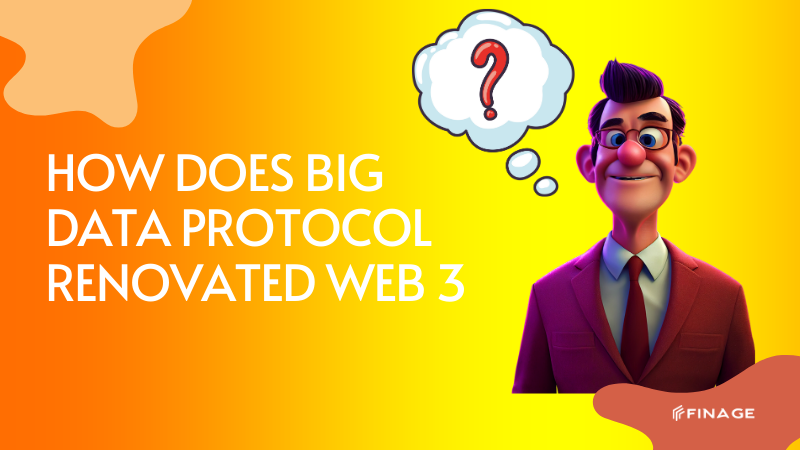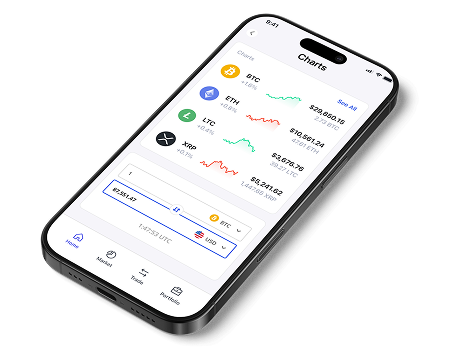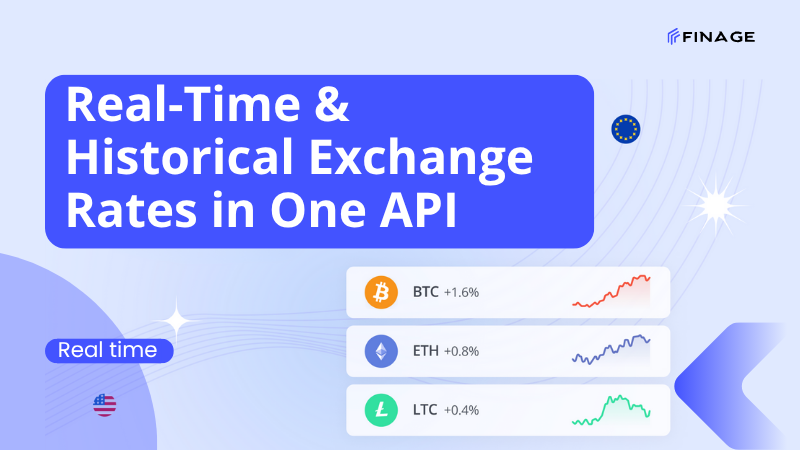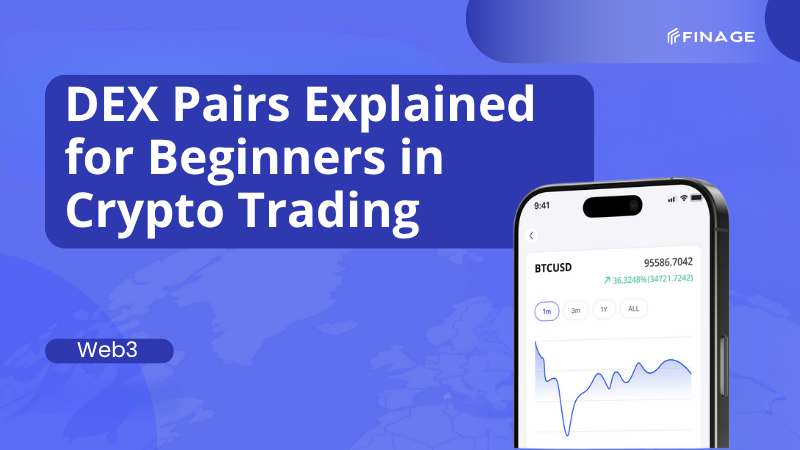How Does Big Data Protocol Renovated Web 3.0
6 min read • January 17, 2024

Introduction
One interesting aspect of the trading sphere is the incredibly valuable big data, which suffers from not being particularly liquid. So, what curbs this? Well, that comes in the form of the Web 3.0-based data marketplace powering Big Data Protocol. This decentralized finance protocol allows access to valuable data while solving the liquidity issue.
How does it achieve this? This is exactly what we’ll look into. We’ll check the protocol in great detail, and ultimately understand how it operates, as well as why it's so helpful!
Contents:
- What is it?
- How it operates
- Gathering the data
- Having said data tokenized
- The farming phase
- The redemption phase
- Big data, its existing problems, and how they’re solved
- The data’s lack of quality
- The data’s lack of liquidity
- Final thoughts
What is it?
So as you can see Web 3.0 refers to the next stage of development for the Internet. It emphasizes improving how users interact with online platforms and how, for example, financial data is exchanged between users and different websites or services. The rapid and massive amount of data created and shared online every second requires new methods for handling and organizing this data. And here, we see the Big Data Protocol (BDP) option which is a prominent solution that incorporates concepts from the field of big data into the world of online trading, specifically in the context of Web 3.0.
BDP is a decentralized architecture that has been created to manage and process substantial volumes of data securely within the cryptocurrencies and blockchain techs. Its primary objective is to improve the effectiveness and safety of data sharing among different participants in the financial markets. So how does BDP influence the trading sector within the framework of Web 3.0?
Protocols
While we have a loose definition of what the protocol is, knowing everything about it will help. We might as well begin with the fact that protocol also serves as a marketplace on which highly valued data from a myriad of professional providers is tokenized and made liquid. Said data is thought to be as valuable, due to its being highly sought after, and paid for by the following:
- Hedge funds
- A myriad of institutional investors
- Family offices
The ecosystem that exists within the protocol is such that thousands of data providers as well as consumers are connected. This is because if such a place that shares data insights is leveraged, it allows for a greater amount of data that allows asset managers to make better-informed decisions.
How it operates
The concept of Web 3.0, often referred to as the "Semantic Web," and its departure from the conventional, centralized architecture of the Internet. Let's break down the key points:
- It is characterized as the "Semantic Web," indicating a transition from the previous versions of the internet. The term suggests a focus on meaning and context in the interactions and data exchanges on the internet.
- Web 3.0 in the context of trading represents the application of the next generation of internet technologies to transform and enhance various aspects of the trading ecosystem, dominating the Web 2.0.
The basic idea is that the protocol creates data tokens that give access to curated datasets. For example, on a platform such as Uniswap, the protocol makes said tokens liquid via yield farming or liquidity mining. The typical mode of operation is as follows:
Gathering the data
As stated above, the protocol can access thousands of data providers, well over 14,000 to be exact. Curators curate the datasets, close to 300 of which are concerned with crypto, and provide data that are organized by several things, which include the following:
- Asset class
- Location
- Industry
- Category
Having said data tokenized
In this phase, a token known as bALPHA is minted for the first set of curated datasets by the protocol, and only 18,000 exist. The tokens’ purpose is to act as a key through which access to datasets is granted.
The farming phase
Access to the valuable data is only possible when liquidity is provided. When liquidity is provided to the appropriate data tokens on Uniswap, the users providing it earn them.
The redemption phase
With the token in hand, users can then proceed to gain what they hold. This is achieved by going to the data room and having the token burnt, after which the data baskets in which the underlying datasets are kept can be accessed.
Big data, its existing problems, and how they’re solved
The protocol is quite important for the mere fact that it addresses two key flaws that affect the data space as it stands today. Addressing them is especially vital when you think of the fact that data is the most important part of the digital age. Said flaws and their respective fixes are as follows:
The data’s lack of quality
Data is only worth anything if it’s good, and it’s fairly common for sources to be way off in terms of what they put out, hence the need for due diligence. The data must come from trustworthy, viable professionals, who go through the painstaking process of ensuring that it’s any good. Fortunately, the protocol is such that it can draw on a myriad of sources that can go through the said process to ensure that the data is good.
The data’s lack of liquidity
Keeping digital information in silos is far from ideal, and yet this is what large datasets have to undergo due to their lack of liquidity. This, however, is curbed by the protocol, whose nature allows for Uniswap’s liquidity to be put out there for data marketplaces. As such, the data is not only valuable to those deemed to be consumers of it but also to those providing liquidity, who by their very nature help the protocol.
Final thoughts
Data’s place in the world at large is only going to get more cardinal as time passes, which means that how it’s accessed should move with the times. This, particularly in the crypto trading space, is exactly what big data protocol does. What the protocol does expertly is address the major issues that plague big data, be it on the quality, and liquidity fronts.
Having the above knowledge is, as you can imagine, quite important, as it keeps you in the loop as it pertains to this development in the use of valuable data. At the very least, it will allow you to know how to go about things and it should get you to the point of engaging with the protocol.
You can get your Real-Time and Historical Cryptocurrency Data with a free Crypto Data API key.
Build with us today!
Claim Your Free API Key Today
Access stock, forex and crypto market data with a free API key—no credit card required.

Stay Informed, Stay Ahead
Finage Blog: Data-Driven Insights & Ideas
Discover company news, announcements, updates, guides and more


